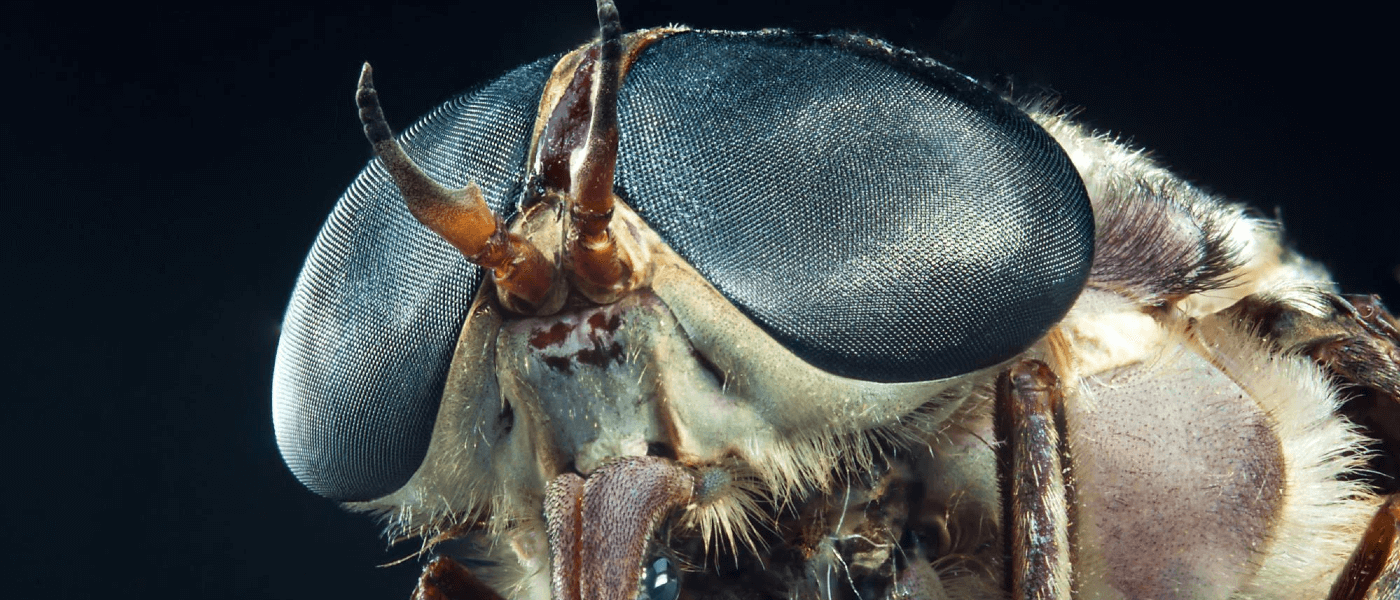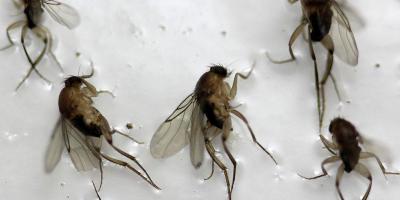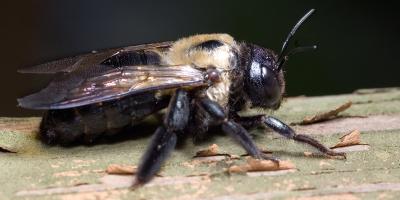Meet the "Other" Flying Bloodsuckers

Mosquitoes aren’t the only flying pests that are out for blood. New England is home to a number of winged creatures who feast on blood and are happy to dine on human cuisine whenever it’s available. Among the more common bloodsucking pests are horseflies, deer flies and black flies, all of which might surprise you with their bite if you don’t recognize them for the bloodthirsty parasites that they are.
Bloodsuckers 101
Only female mosquitoes bite to suck blood, which they use to make their eggs, and the same goes for horseflies, deer flies and black flies. Because biting flies’ bloodlust is a function of their reproduction cycle (and most complete only one generation per year), the risk of being bitten is only significant during certain times of the year -- mating season, basically, mainly in the spring. Also, the intensity of their attack can vary from year to year depending on that season’s brood.
Horseflies
Horseflies are the largest bloodsucker on this list, ranging in size from about 3/4 inch to 1-1/4 inches, with either clear or solid-color wings and big, brightly colored eyes. In great enough numbers, horseflies can also drain an animal or person of a significant amount of blood -- 20 to 30 horseflies feeding for six hours can eat almost half a cup.
To get at their meal, both horseflies and deer flies use their knife-like mouths to pierce the flesh, then feed on the blood that pools above the skin. If you’ve ever been bitten by a horsefly or deer fly, you already know -- this process is quite painful for the host.
Deer Flies
Deer flies are quite similar to horseflies -- they’re both from the Tabanidae family of insects -- only deer flies are smaller. Their bites, however, are just as painful, often compared to a bee sting. Because their bite hurts so badly, horseflies and deer flies are called “intermittent feeders,” as their host usually reacts so forcefully that the fly is forced to find another one.
Black Flies
There are about 40 different species of black flies in New England, but only a few of them bite. In fact, only two of them routinely bite humans, and those two are really only active between May and June (as are horseflies and deer flies).
Head for Dry Land
All three fly species live and breed around water, making wetlands -- and even open waterways like lakes, rivers and streams -- hotbeds of biting fly activity. Because flies typically infest sensitive areas such as these, it’s usually not possible (and often not legal) to control the population itself. Rather, the best means of combating potential fly bites is by using insect repellents such as DEET or picaridin.
If you do get bitten, unless you have a particular allergy, there’s nothing much to worry about as far as your health is concerned. The best course of treatment is to wash the affected area with soap and water and apply ice to help with the pain. Over-the-counter antihistamines can help reduce itching. Some biting flies can transmit diseases, but overall the transmission of disease is relatively rare from fly to human… at least from most fly varieties.
Mosquitoes, however, are another story. Mosquitoes spread so much disease -- and are responsible for so many deaths worldwide -- that the Centers for Disease Control and Prevention calls them “the world’s deadliest animal.” The World Health Organization agrees, citing Zika virus, Dengue fever, West Nile Virus, yellow fever and malaria, which, all together, kill millions of people every year. Mosquitoes are known to spread West Nile and Eastern Equine Encephalitis in New England.
In fact, according to a recent CBS news report, “At any moment across the globe mosquitoes lead the news, infecting tens of thousands with disease. The mosquito has wreaked havoc on the world, killing as many as 50 billion people over the course of human existence.”
No wonder then that New England homeowners who live in heavily-wooded areas often opt for professional mosquito control for protection against these vectors of disease.
While not the only biting fly, mosquitoes are certainly the most common in New England. Still, there’s no need for them to be in your yard. Click here to learn more about how to get their numbers under control.



